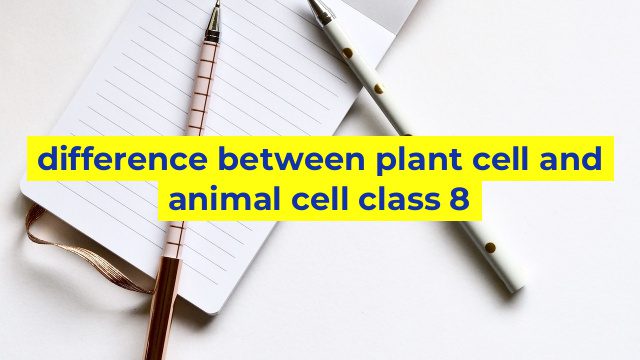The Difference Between Plant Cell and Animal Cell: A Class 8 Biology Lesson
As students in class 8 delve deeper into biology, they will come across the concept of cells. Cells are the basic building blocks of all living organisms. But, not all cells are the same. One of the core differences that students will encounter is the difference between plant cells and animal cells. Here, we will explore the distinguishing factors between these two types of cells.
Cell Wall vs. No Cell Wall
Perhaps the most apparent difference between plant cells and animal cells is the presence or absence of a cell wall. Plant cells possess a rigid cell wall that surrounds the cell membrane. This cell wall offers the plant cell structural support, protecting it from mechanical stress. Animal cells, on the other hand, do not have a cell wall. Instead, they are held together by adhering to one another.
Chloroplasts vs. No Chloroplasts
Another distinguishing factor between plant cells and animal cells is the presence or absence of chloroplasts. Chloroplasts are organelles that are responsible for the process of photosynthesis, which allows plants to produce food. Only plant cells possess chloroplasts. In contrast, animal cells lack this organelle and hence are not capable of photosynthesis.
Shape and Function of Vacuoles
Vacuoles are another organelle that can differentiate plant cells and animal cells. A vacuole is a membrane-enclosed organelle that takes on varying shapes depending on its function. In plant cells, vacuoles are much larger than in animal cells and mostly take up between 30% to 90% of the cell’s volume. In addition to storage of water, ions and nutrients, vacuoles in plant cells also perform a variety of functions such as storing pigments or thorns to discourage grazing animals. Animal cells also have vacuoles, but they are much smaller in size and function in getting rid of waste.
Conclusion
In summary, plant cell and animal cell class 8 biology lessons will teach students that plant cells are characterized by the presence of a cell wall, chloroplasts, and large vacuoles, whereas animal cells lack a cell wall and chloroplasts and have smaller vacuoles. These differences have functional implications for the survival and growth of the organisms that contain these cells.
Table difference between plant cell and animal cell class 8
| Features | Plant Cell | Animal Cell |
|---|---|---|
| Nucleus | Present | Present |
| Cell Wall | Present | Absent |
| Chloroplasts | Present | Absent |
| Large Vacuole | Present | Small Vacuoles |
| Shape | Rectangular | Irregular |

